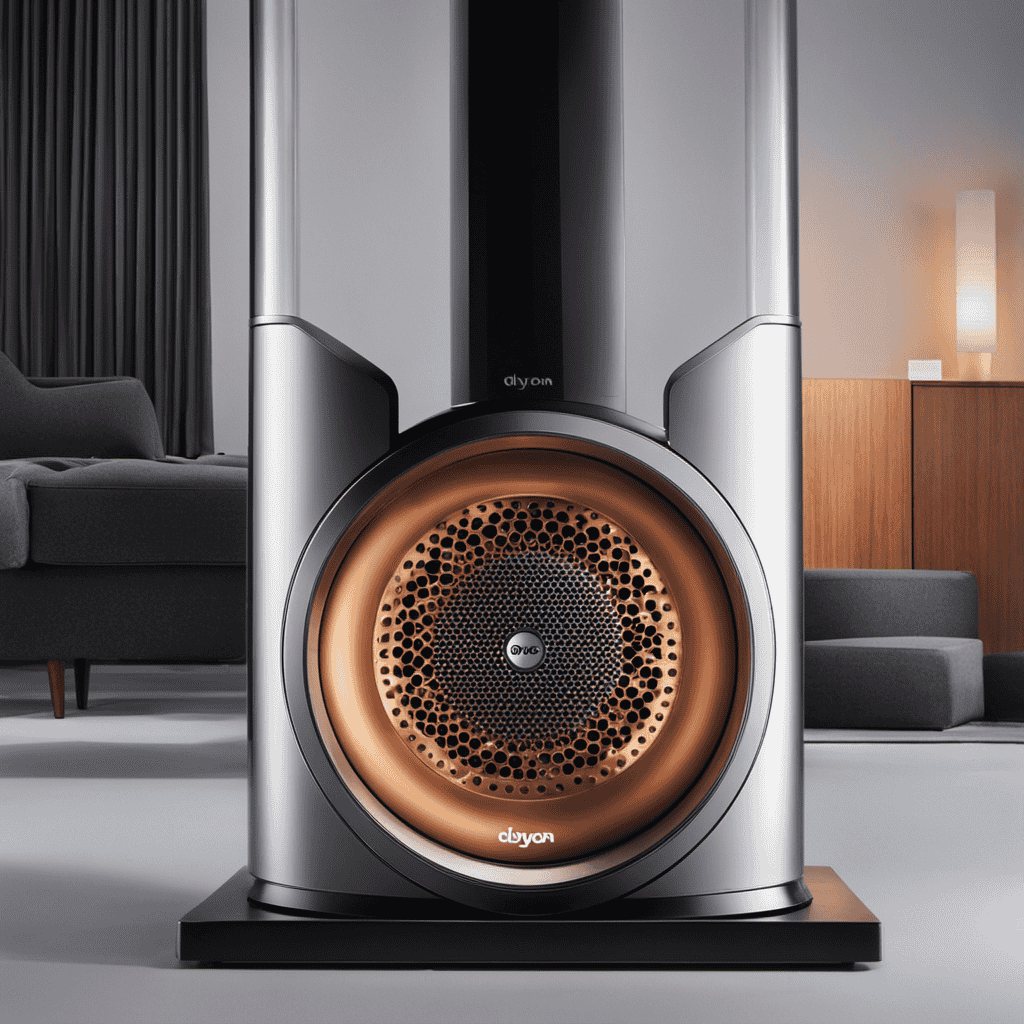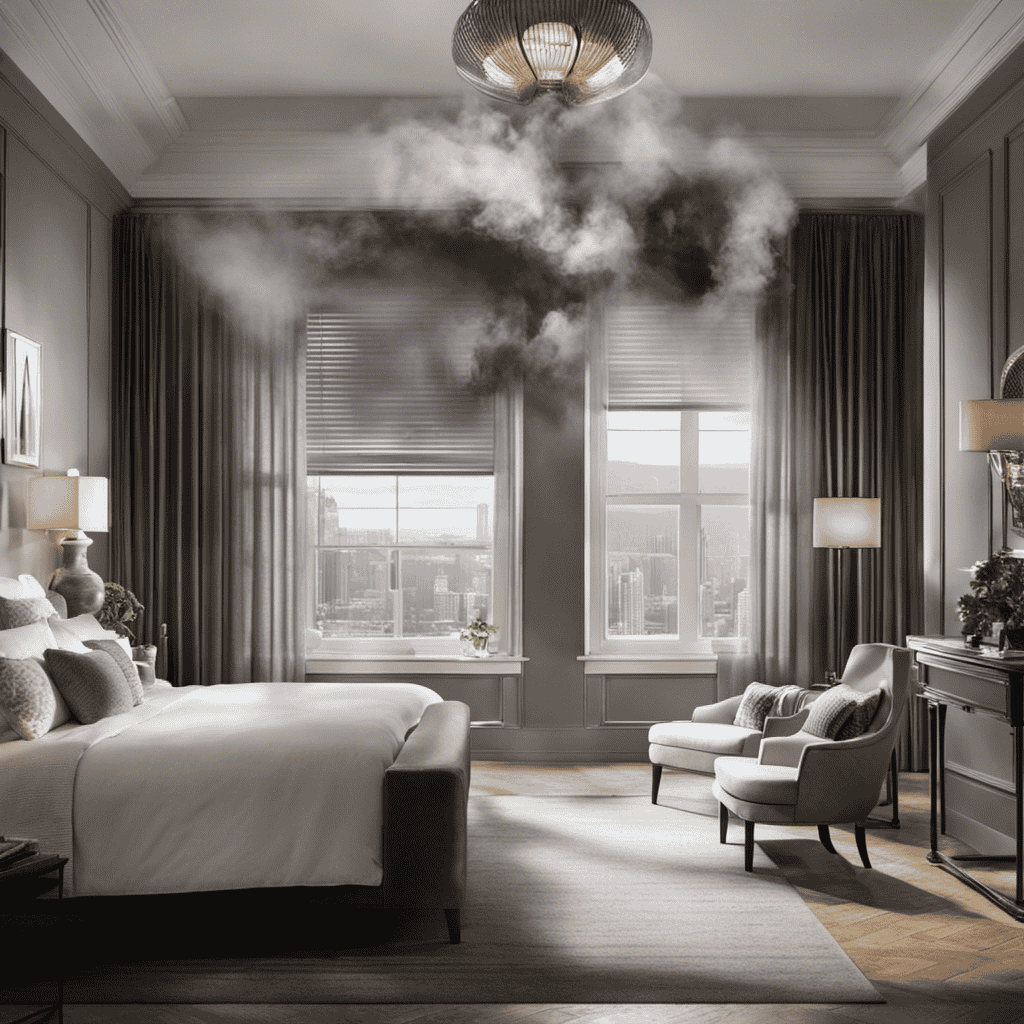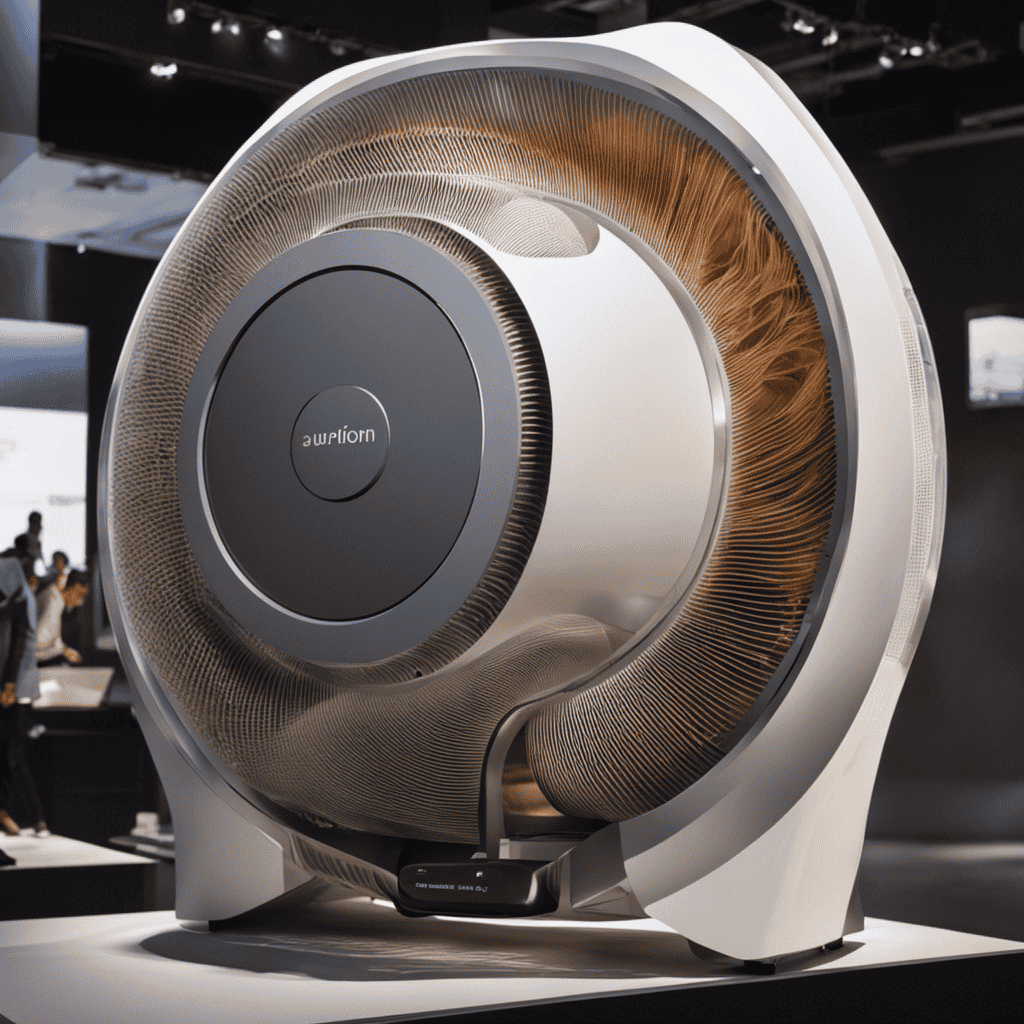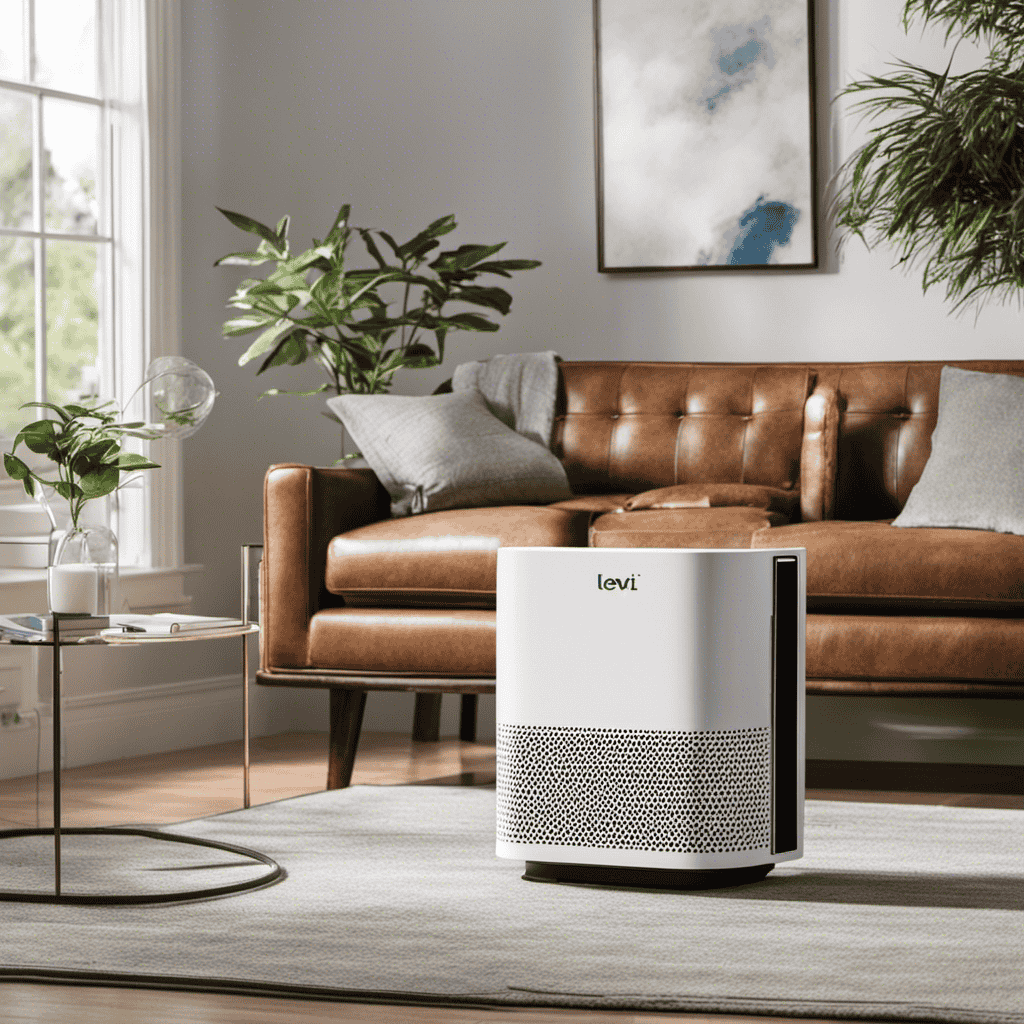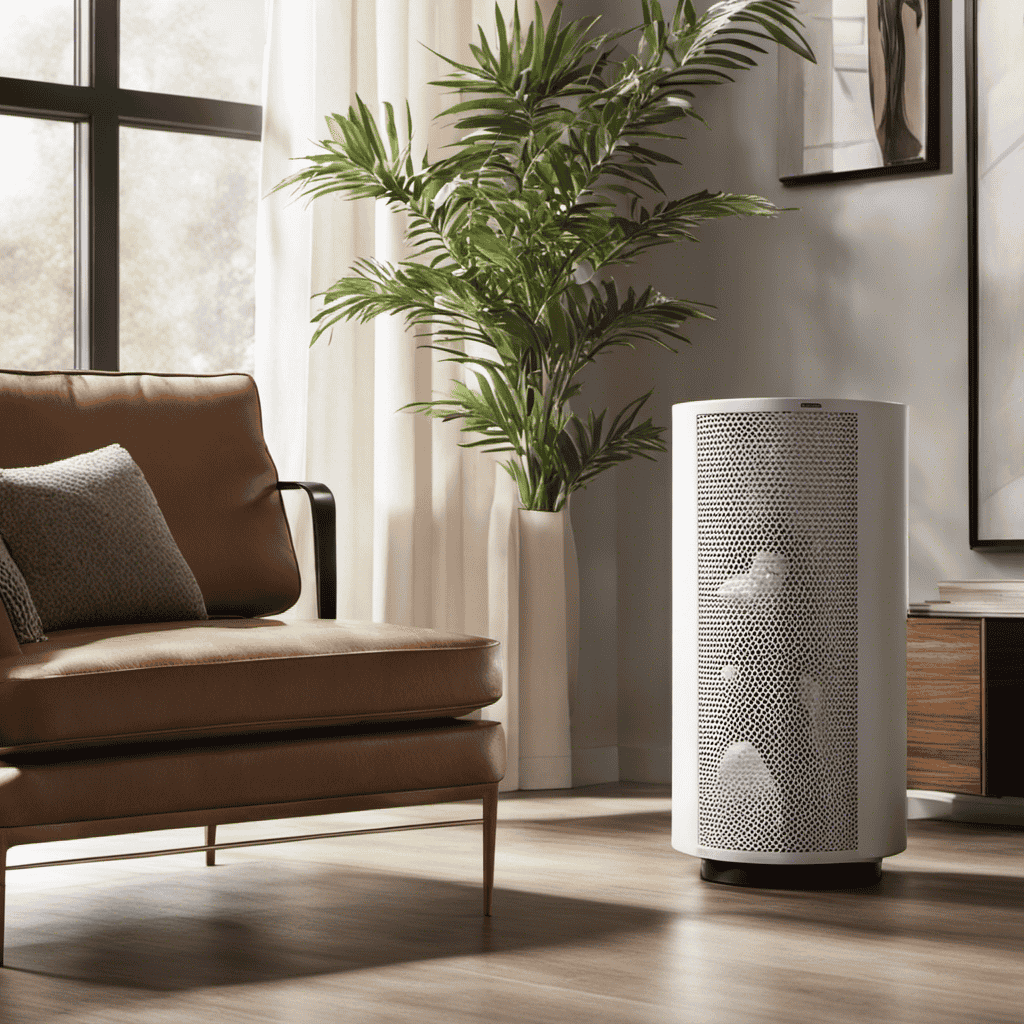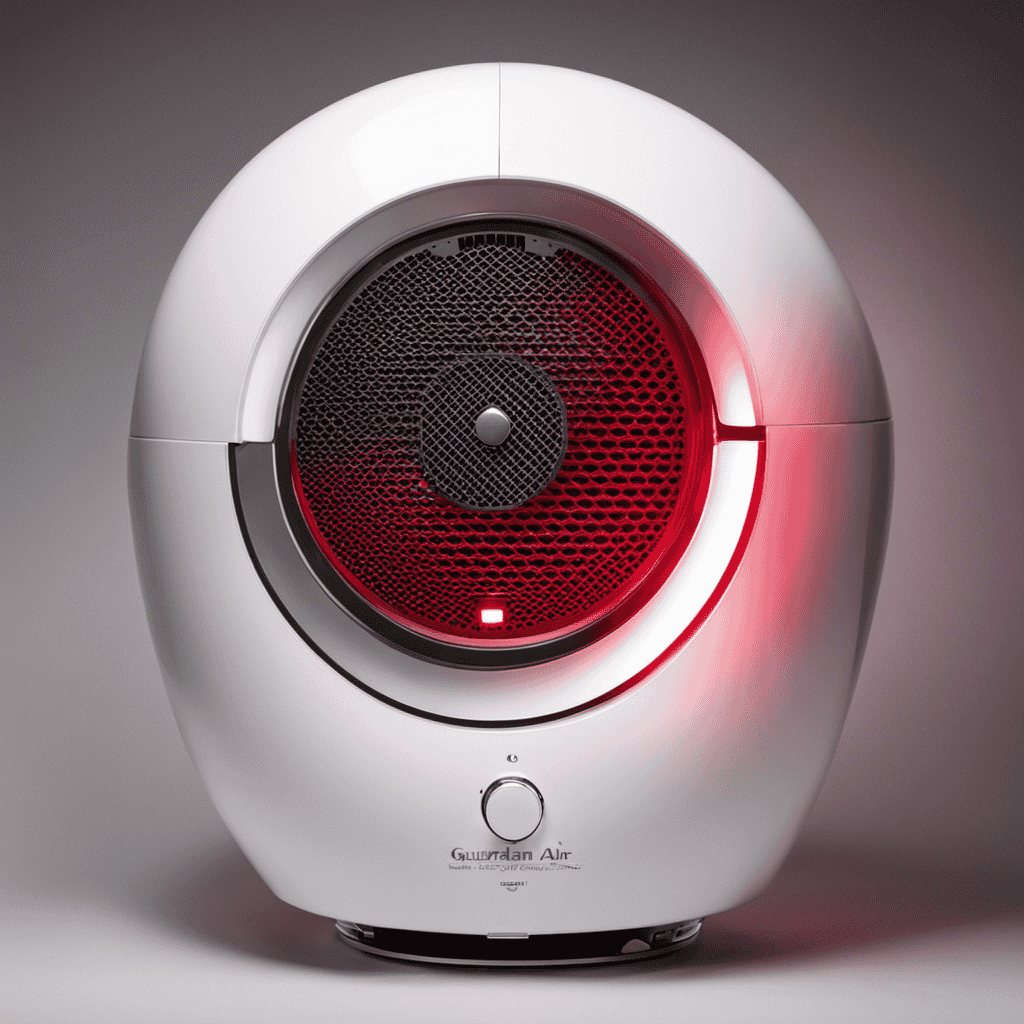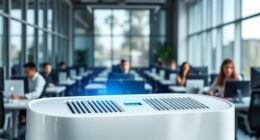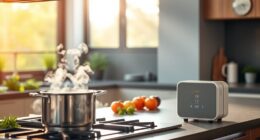Hello, everyone! Have you ever been curious about the mechanism behind the Dyson Hepa Air Purifier’s effectiveness? Get ready, because I’m going to guide you through the complex operations of this cutting-edge system.
In this article, we’ll delve into the importance of air purification, break down the science behind HEPA technology, and explore how Dyson’s cutting-edge design captures and filters airborne particles.
So, get ready to breathe in the cleanest, freshest air of your life with Dyson!
Key Takeaways
- Dyson’s innovative air purification system uses advanced technology to ensure clean and healthy air.
- The combination of a glass HEPA filter and activated carbon filter in Dyson’s filtration technology effectively traps and removes 99.97% of airborne pollutants.
- Dyson’s air purifiers improve indoor air quality by capturing and filtering microscopic particles as small as 0.3 microns, including allergens, dust, pollen, mold spores, bacteria, and viruses.
- The powerful airflow, smart sensors, and air multiplier technology of Dyson’s air purifiers contribute to improved respiratory health by circulating purified air, detecting and adjusting filtration speed based on air quality, and eliminating odors and harmful gases.
The Importance of Air Purification
The importance of air purification can’t be overstated in maintaining clean and healthy indoor environments. Clean air is essential for our well-being, as it helps to reduce the risk of respiratory diseases and allergies caused by airborne pollutants.
Air purification systems play a crucial role in removing harmful particles such as dust, pollen, pet dander, and mold spores from the air we breathe. By eliminating these pollutants, air purifiers provide numerous benefits. They enhance indoor air quality, reducing the presence of pollutants that can trigger asthma attacks or worsen existing respiratory conditions.
Additionally, air purification helps to remove unpleasant odors, smoke, and volatile organic compounds (VOCs) from the air, creating a fresh and comfortable living space. Investing in air purification is a proactive step towards ensuring a healthier and more enjoyable indoor environment.
Understanding HEPA Technology
By filtering out tiny particles, a HEPA air purifier improves indoor air quality. HEPA stands for High Efficiency Particulate Air, and it is a type of filter that can remove 99.97% of particles as small as 0.3 microns from the air. This technology is highly beneficial in reducing allergens, dust, pollen, mold spores, and even some bacteria and viruses from the air we breathe.
The benefits of using a HEPA filter are numerous. It helps alleviate allergy symptoms, reduces the risk of respiratory infections, and provides a cleaner and healthier environment. However, it is crucial to maintain the HEPA filter regularly to ensure optimal performance. Regular filter replacement and cleaning are essential to prevent clogging and maintain the purifier’s efficiency.
Following the manufacturer’s guidelines for maintenance is vital to prolong the lifespan of the filter and keep the air purifier functioning effectively.
Dyson’s Innovative Air Purification System
When it comes to air purification technology, Dyson stands out with its innovative filtration system. The company’s advanced technology ensures that the air you breathe is free from harmful pollutants and allergens.
With its unique purification features, Dyson takes air quality improvement to a whole new level, making it a top choice for those seeking a cleaner and healthier environment.
Dyson’s Filtration Technology
To understand how Dyson’s HEPA air purifier works, you’ll want to know about its innovative filtration technology.
Dyson’s filtration system is highly effective in purifying the air by capturing microscopic particles as small as 0.3 microns, including pollen, dust, mold spores, and pet dander.
The key benefit of Dyson’s filtration technology lies in its ability to remove 99.97% of airborne pollutants from your indoor environment. This is achieved through a combination of a glass HEPA filter and an activated carbon filter.
The HEPA filter traps particles while the activated carbon filter absorbs gases and odors. As a result, Dyson’s air purifier ensures cleaner and fresher air, reducing the risk of allergies, respiratory issues, and improving overall indoor air quality.
Air Quality Improvement
The innovative filtration technology of Dyson’s air purifier ensures cleaner and fresher air, reducing the risk of allergies and respiratory issues.
With its HEPA filtration system, the air purifier effectively captures and traps microscopic particles such as dust, pollen, pet dander, and even harmful pollutants like smoke and volatile organic compounds (VOCs). This advanced filtration process removes up to 99.97% of airborne allergens and pollutants as small as 0.3 microns in size.
By eliminating these contaminants, the air purifier benefits individuals with allergies, asthma, or other respiratory conditions by providing a healthier indoor environment.
In addition to improving indoor air quality, Dyson’s air purifier also contributes to air pollution solutions by reducing the release of harmful particles into the atmosphere, promoting a cleaner and more sustainable living environment.
Unique Purification Features
You’ll be amazed by the innovative filtration technology of this air purifier. It captures and traps microscopic particles to ensure cleaner and fresher indoor air. The unique features of this purifier set it apart from others on the market.
With advanced air purification functions, it targets and eliminates harmful contaminants, such as allergens, dust, and pet dander. The purifier utilizes a multi-stage filtration system, including a HEPA filter, activated carbon filter, and a pre-filter. These filters work together to capture and remove particles as small as 0.3 microns, including pollen, mold spores, and bacteria.
Additionally, the purifier features an intelligent sensor that detects air quality and adjusts the purification settings accordingly. With its high-performance technology, this air purifier ensures a healthier living environment for you and your family.
Now, let’s delve into the process of capturing and filtering airborne particles.
Capturing and Filtering Airborne Particles
When it comes to air purification, effective particle removal is crucial for improving indoor air quality.
With advanced filtration technology, particles as small as 0.3 microns can be captured and filtered out, ensuring a cleaner and healthier environment.
Effective Particle Removal
One of the key reasons why the Dyson HEPA air purifier is so popular is its ability to effectively remove particles from the air. This is achieved through its advanced filtration system, designed to capture and trap even the tiniest airborne particles.
The purifier utilizes a High-Efficiency Particulate Air (HEPA) filter, which is capable of removing particles as small as 0.3 microns with an efficiency of 99.97%. The HEPA filter works by creating a barrier that allows only clean air to pass through, while trapping and containing harmful particles like dust, pollen, pet dander, and mold spores.
This effective filtration system ensures that the air you breathe is free from these potentially harmful particles, promoting a healthier and cleaner indoor environment.
Advanced Filtration Technology
With its advanced filtration system, the Dyson HEPA air purifier effectively captures and traps airborne particles as small as 0.3 microns, ensuring cleaner and healthier indoor air quality. This state-of-the-art technology utilizes a multi-layered approach to remove pollutants from the air.
Here are some key features of the Dyson HEPA air purifier:
-
High-Efficiency Particulate Air (HEPA) Filter: The HEPA filter is made of dense fibers that can capture microscopic particles, such as pollen, dust mites, and pet dander.
-
Activated Carbon Filter: This filter absorbs odors, gases, and volatile organic compounds (VOCs), leaving the air fresh and clean.
-
Air Multiplier Technology: The purifier uses powerful airflow to draw in contaminated air and circulate purified air throughout the room.
-
Automatic Sensors: The purifier has sensors that detect air quality and adjust the filtration speed accordingly.
Improved Indoor Air Quality
The improved indoor air quality ensures a cleaner and healthier living environment. Indoor air pollution can have severe health effects, such as respiratory problems, allergies, and even chronic diseases.
By utilizing advanced filtration technology, the Dyson HEPA air purifier effectively eliminates airborne particles, including dust, pollen, pet dander, and mold spores. This is achieved through a multi-stage filtration process that captures particles as small as 0.3 microns in size. The HEPA filter traps these pollutants, preventing them from circulating in the air and reducing the risk of respiratory issues.
Additionally, the purifier is equipped with activated carbon filters that remove odors and harmful gases. By removing these allergens and pollutants, the Dyson HEPA air purifier creates a healthier indoor environment for you and your family.
Eliminating Allergens and Pollutants
You’ll be amazed at how the Dyson HEPA air purifier removes allergens and pollutants from your home. This innovative device utilizes advanced filtration technology to improve respiratory health by eliminating harmful particles in the air.
Here’s how it works:
-
HEPA Filtration: The purifier’s high-efficiency particulate air (HEPA) filter captures microscopic allergens, such as dust mites, pollen, and pet dander, ensuring cleaner air quality.
-
Activated Carbon Filter: The activated carbon filter efficiently traps and neutralizes odors, gases, and volatile organic compounds (VOCs), providing a fresher and more pleasant environment.
-
Air Multiplier Technology: This unique technology amplifies the airflow, circulating purified air throughout the room, ensuring consistent and thorough filtration.
-
Smart Sensors: The purifier is equipped with intelligent sensors that monitor and detect changes in air quality, automatically adjusting the fan speed to efficiently eliminate pollutants.
With its cutting-edge features, the Dyson HEPA air purifier is a reliable choice for eliminating allergens and improving respiratory health in your home.
The Role of Activated Carbon Filters
To effectively neutralize odors and gases, activated carbon filters play a crucial role in improving your home’s air quality. These filters are made from activated carbon, which is a highly porous form of carbon that is treated to have a large surface area. This allows the activated carbon to trap and adsorb various odorous compounds and volatile organic compounds (VOCs) present in the air. The activated carbon benefits are numerous, including the ability to eliminate unpleasant smells from cooking, pets, and smoke. The following table illustrates the effectiveness of activated carbon filters in odor elimination:
| Odor Source | Odor Intensity | Odor Elimination (with activated carbon filter) |
|---|---|---|
| Cooking | High | Very Effective |
| Pets | Moderate | Effective |
| Smoke | High | Highly Effective |
| Mold | Low | Moderately Effective |
| Chemicals | High | Extremely Effective |
As you can see, activated carbon filters are highly effective in eliminating odors, making them an essential component of any air purification system.
Circulating Clean and Fresh Air
In my previous section, I discussed the role of activated carbon filters in the Dyson HEPA air purifier. Now, let’s delve into how this innovative device circulates clean and fresh air, thus improving respiratory health and reducing indoor pollutants.
The Dyson HEPA air purifier utilizes a powerful fan to draw in air from the surrounding environment. The air then passes through the HEPA filter, which effectively captures microscopic particles such as pollen, dust, and pet dander.
Once the air is purified, it is released back into the room, creating a continuous cycle of clean air circulation. The device also utilizes advanced sensors to detect and automatically adjust the airflow based on the level of indoor pollutants.
By circulating clean and fresh air, the Dyson HEPA air purifier contributes to improved respiratory health and reduced exposure to indoor pollutants.
Now, let’s explore how the device monitors and adjusts air quality.
Monitoring and Adjusting Air Quality
When the device detects high levels of indoor pollutants, it automatically adjusts the airflow to ensure optimal air quality.
The Dyson HEPA air purifier utilizes advanced air quality monitoring technology to continuously assess the levels of pollutants in the surrounding environment. It employs highly sensitive sensors that detect the presence of harmful particles such as dust, pollen, and pet dander. These sensors send real-time data to the purifier’s intelligent system, which then analyzes the information and determines the appropriate adjustment required to maintain clean and fresh air.
The automatic adjustment feature allows the device to respond swiftly to changes in air quality, ensuring that the user is always breathing in healthy air. This innovative technology provides a seamless and efficient solution for maintaining optimal air quality in any indoor space.
Enhancing Indoor Air Quality With Dyson
Ensure your indoor air quality is enhanced by utilizing the advanced technology of the Dyson HEPA air purifier. This innovative device combines multiple features to effectively improve the air you breathe.
Here are four key ways the Dyson HEPA air purifier can enhance your indoor air quality:
-
HEPA Filtration: The purifier’s high-efficiency particulate air (HEPA) filter captures up to 99.97% of microscopic particles, such as pollen, dust, and pet dander, ensuring cleaner air.
-
Activated Carbon Filter: The activated carbon filter helps eliminate unpleasant odors and harmful gases, such as volatile organic compounds (VOCs), enhancing the overall air quality.
-
Air Multiplier Technology: The air purifier utilizes air multiplier technology to project purified air throughout the room, promoting better air circulation and ventilation.
-
Intelligent Sensors: Equipped with intelligent sensors, the Dyson HEPA air purifier automatically monitors and adjusts the air quality, reducing the risk of respiratory illnesses.
With the Dyson HEPA air purifier, you can create a healthier and more comfortable environment by enhancing your ventilation systems and reducing the presence of respiratory irritants.
Frequently Asked Questions
How Much Does the Dyson Hepa Air Purifier Cost?
The Dyson HEPA air purifier is effective at removing airborne pollutants and allergens from the air. It is energy efficient, using advanced technology to clean the air while consuming less power.
Can the Dyson Hepa Air Purifier Be Used in Large Spaces?
Yes, the Dyson HEPA air purifier can be used in large spaces. Its benefits include removing allergens and pollutants, and its effectiveness can be maximized by placing it in a central location and keeping doors and windows closed.
Is the Dyson Hepa Air Purifier Noisy When in Operation?
Yes, the Dyson HEPA air purifier can be noisy when in operation. However, it is energy efficient and outperforms other brands in terms of performance. The noise level can vary depending on the fan speed.
How Often Should the Filters in the Dyson Hepa Air Purifier Be Replaced?
I’ll tell you how often filters should be replaced in the Dyson HEPA air purifier and how to properly maintain them. It’s important to keep the filters clean for optimal performance and air quality.
Does the Dyson Hepa Air Purifier Come With a Warranty?
Yes, the Dyson HEPA Air Purifier comes with a warranty. The warranty ensures that if anything goes wrong with the purifier, it will be repaired or replaced. This provides peace of mind and protection for your investment.
Conclusion
In conclusion, the Dyson HEPA air purifier is a symbol of purity and protection in our modern world. Its advanced technology and innovative design work tirelessly to capture and filter airborne particles, eliminating allergens and pollutants that threaten our well-being.
With the power of activated carbon filters, it ensures that only clean and fresh air circulates in our indoor environment. By monitoring and adjusting air quality, the Dyson HEPA air purifier enhances our indoor air quality, providing us with a safe and healthy sanctuary.
